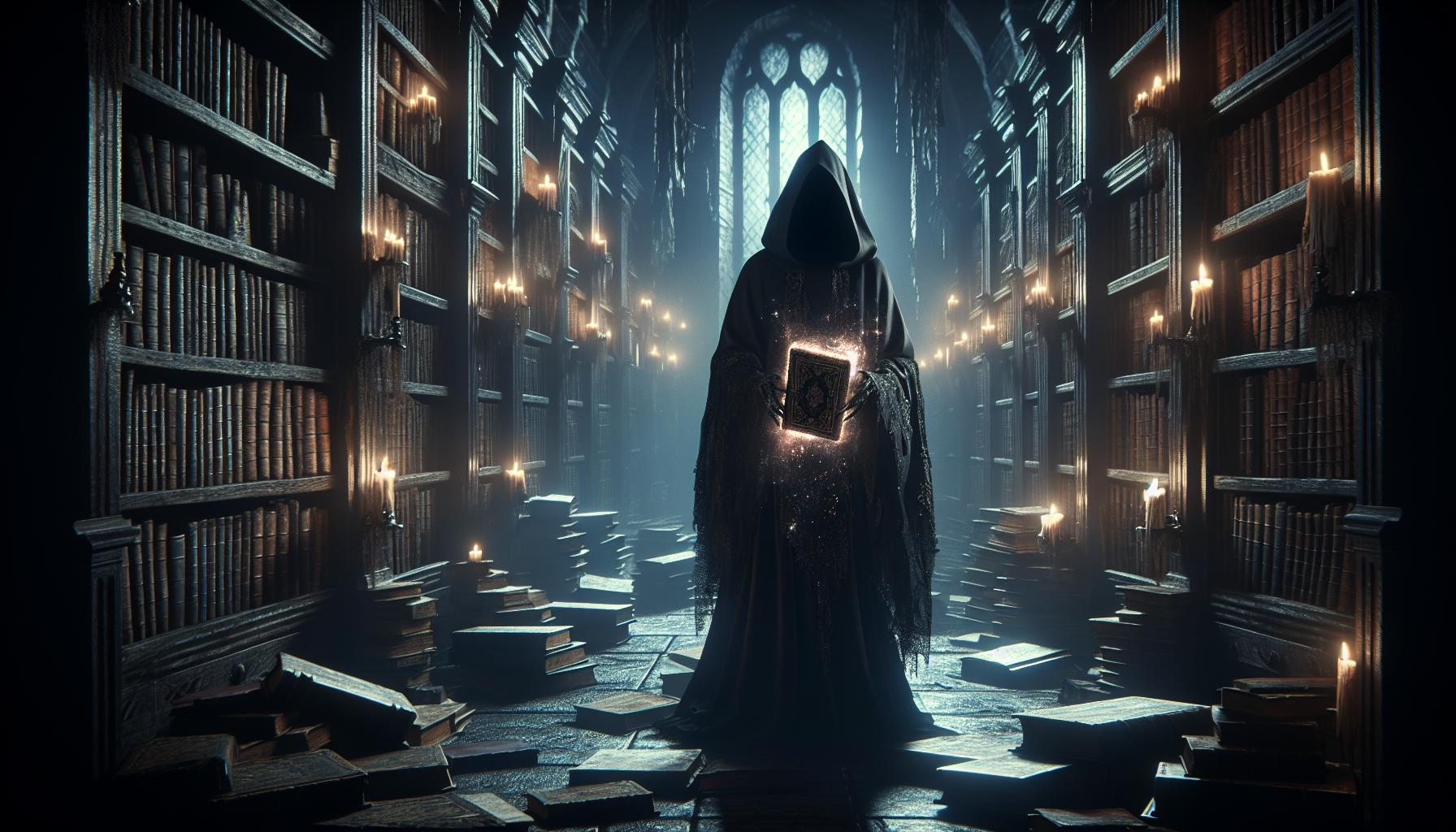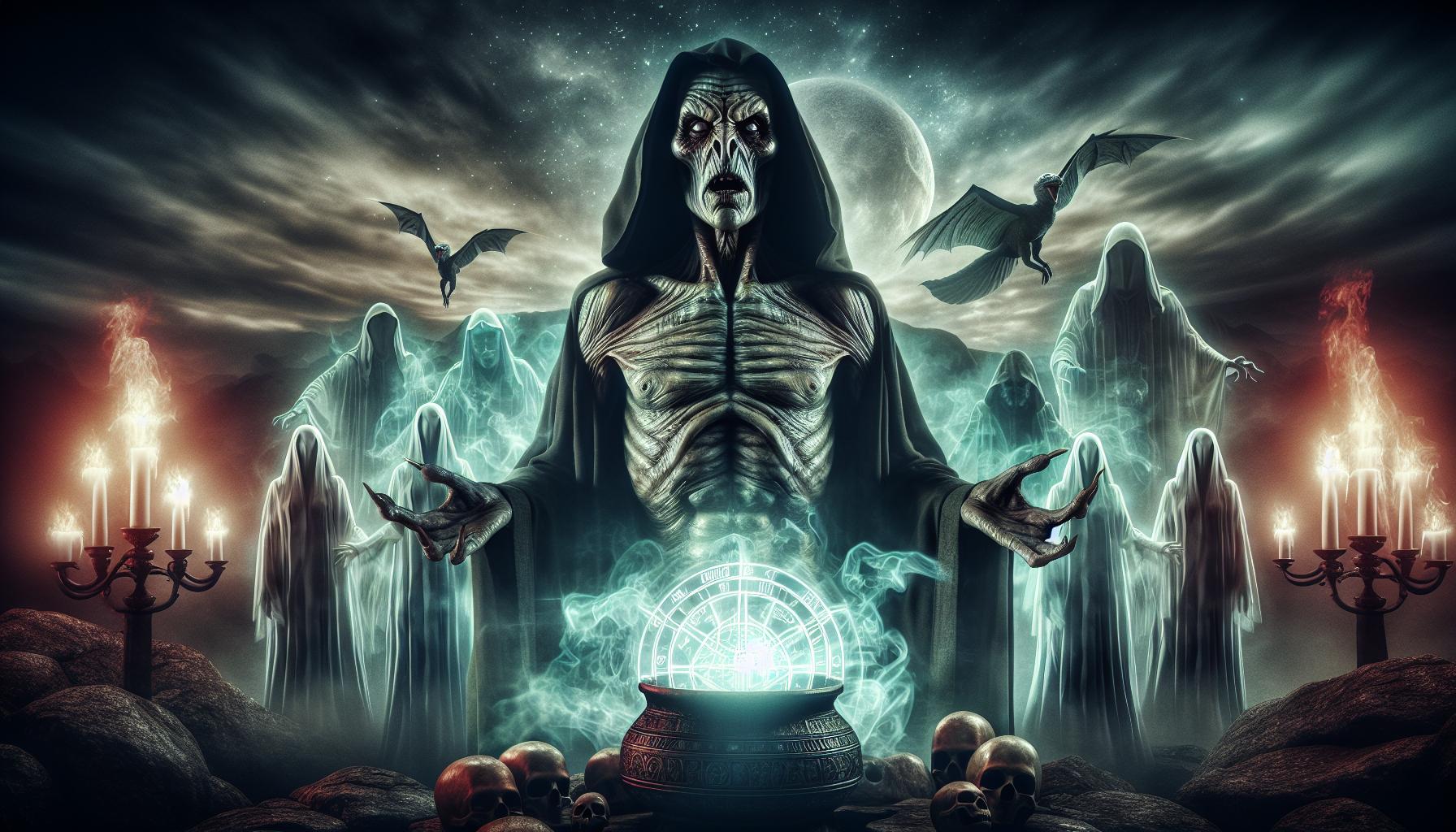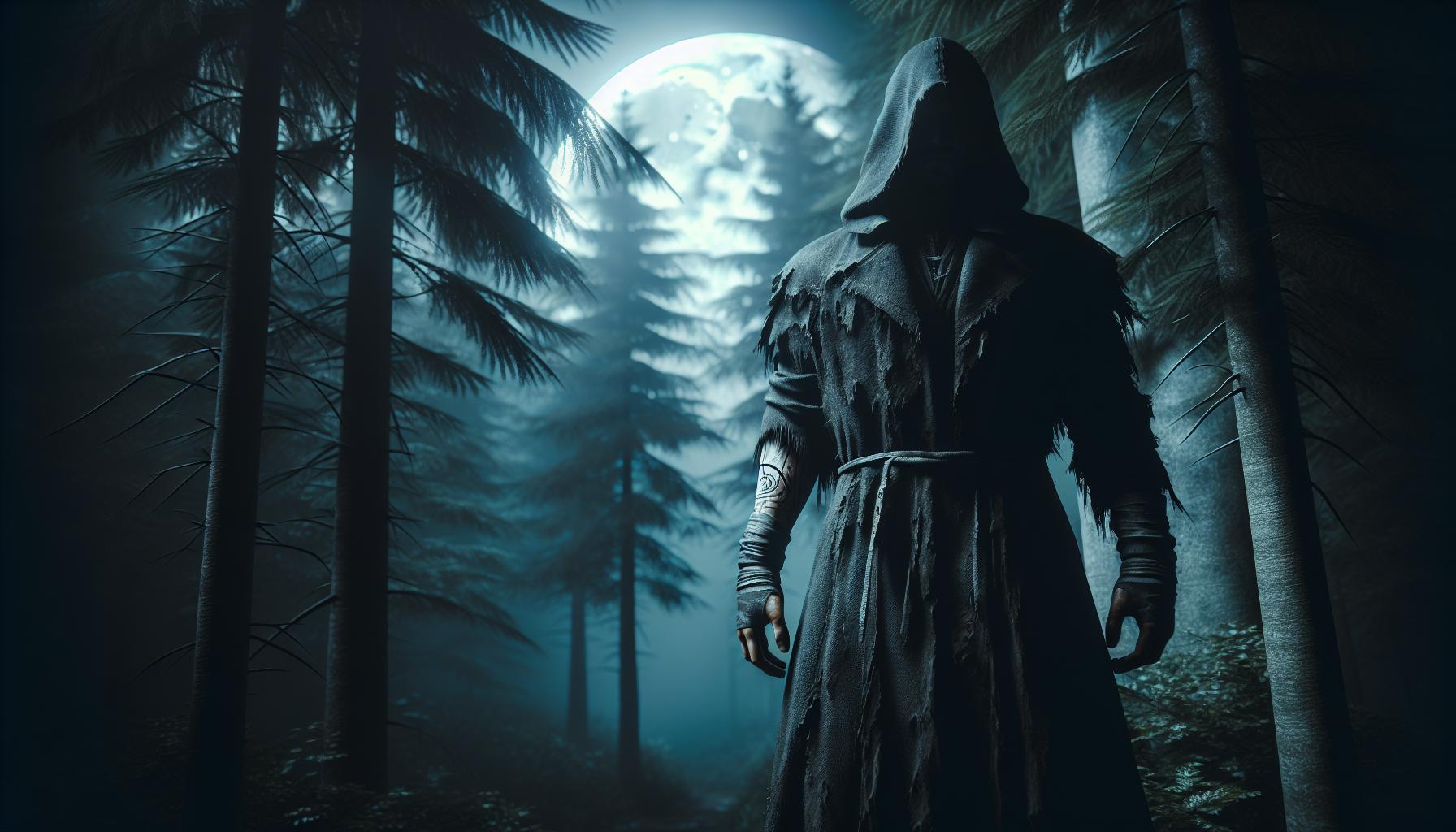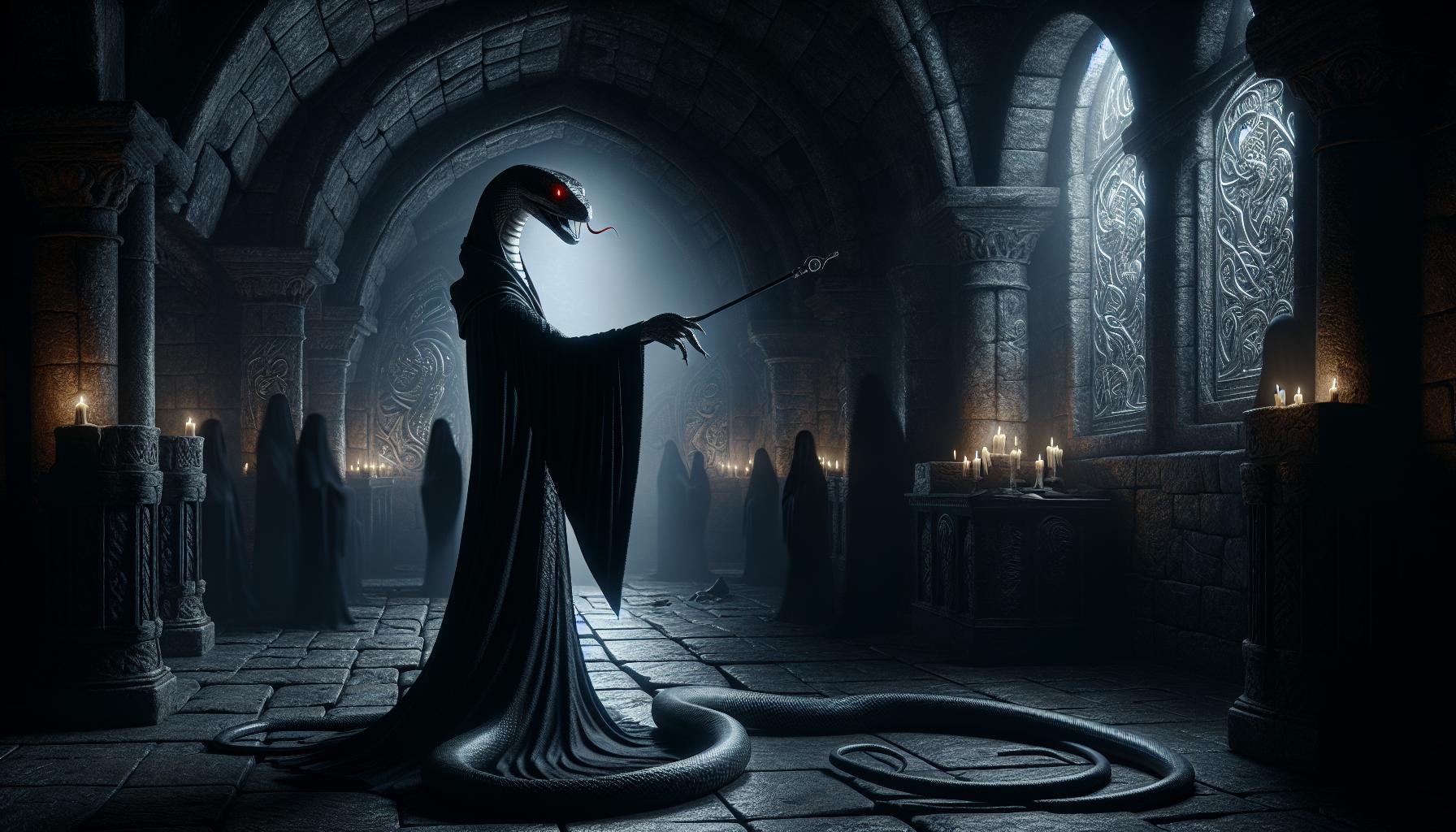As a lifelong Harry Potter fan I’ve always been fascinated by the series’ complex villains who bring depth and darkness to J.K. Rowling’s magical world. From the terrifying Lord Voldemort to the cunningly cruel Bellatrix Lestrange these antagonists aren’t just evil for evil’s sake – they’re richly developed characters with compelling backstories and motivations.
When I think about what makes a truly memorable villain it’s clear that the Harry Potter series sets the bar incredibly high. These antagonists don’t just threaten our beloved heroes – they challenge their values test their resolve and force them to confront difficult moral choices. Through my deep dive into the wizarding world’s dark side I’ll explore what makes these villains so effectively frightening and unforgettable.
Key Takeaways
- Lord Voldemort, born as Tom Riddle, transformed from a talented Hogwarts student into the most feared dark wizard through his pursuit of immortality and power.
- Voldemort’s reign of terror spanned two Wizarding Wars, during which he gathered loyal followers called Death Eaters and created seven Horcruxes to achieve immortality.
- Key antagonists like Bellatrix Lestrange and Lucius Malfoy formed Voldemort’s inner circle, executing his vision of pure-blood supremacy through systematic violence and Ministry infiltration.
- His ultimate defeat at the Battle of Hogwarts in 1998 came after the destruction of his Horcruxes and the revelation of the Elder Wand’s true allegiance to Harry Potter.
- Voldemort’s legacy led to lasting changes in the wizarding world, including enhanced security measures, educational reforms, and the abolition of pure-blood supremacy laws.
Who is Lord Voldemort: The Ultimate Harry Potter Villain
Lord Voldemort emerged as Tom Marvolo Riddle, born on December 31, 1926, to Merope Gaunt and Tom Riddle Sr. His transformation from a talented Hogwarts student to the most feared dark wizard showcases a calculated descent into evil.
Three key aspects define Voldemort’s character:
- Split his soul into 7 Horcruxes through murder
- Gathered loyal followers called Death Eaters
- Mastered powerful dark magic spells
The Dark Lord’s physical appearance reflects his corrupted soul:
- Chalk-white skin
- Glaring red eyes
- Snake-like facial features
- Missing nose
- Long spider-like fingers
Here’s a breakdown of Voldemort’s significant timeline:
| Year | Event |
|---|---|
| 1926 | Born at Wool’s Orphanage |
| 1938 | Entered Hogwarts School |
| 1943 | Opened Chamber of Secrets |
| 1970 | Started First Wizarding War |
| 1981 | First defeat by Harry Potter |
| 1995 | Physical resurrection |
| 1998 | Final death at Battle of Hogwarts |
His quest for power stems from:
- Fear of death
- Belief in pure-blood supremacy
- Desire for immortality
- Hatred of Muggles
- Obsession with prophecy
Voldemort’s exceptional magical abilities include:
- Parseltongue communication
- Wandless magic mastery
- Legilimency expertise
- Flying without support
- Instant killing curse proficiency
- Muggle-born wizards
- Blood traitors
- Order of the Phoenix members
- Ministry of Magic officials
- Anyone opposing his regime
The Rise of Tom Riddle

Tom Riddle’s transformation from an orphaned student to the most feared dark wizard illustrates a calculated descent into darkness. His journey exemplifies the corrupting influence of power combined with deep-seated prejudices.
From Orphan to Dark Lord
Born in 1926 at Wool’s Orphanage in London, Tom Riddle displayed exceptional magical abilities from an early age. He terrorized fellow orphans through subtle acts of cruelty, collected trophies from his victims, demonstrated remarkable control over his powers. During his years at Hogwarts (1938-1945), Riddle maintained a perfect academic record, earned a prefect badge in his fifth year, became Head Boy in his seventh year. His charming demeanor deceived teachers like Horace Slughorn while he secretly explored the darkest corners of magic in the Restricted Section of the library.
- Slytherin’s locket, stolen from Hepzibah Smith
- Hufflepuff’s cup, acquired through Smith’s murder
- Ravenclaw’s diadem, hidden in Albania’s forests
| Horcrux | Year Created | Significant Death |
|---|---|---|
| Diary | 1943 | Myrtle Warren |
| Ring | 1943 | Tom Riddle Sr. |
| Locket | 1946 | Hepzibah Smith |
| Cup | 1946 | Hepzibah Smith |
Voldemort’s First Reign of Terror

Lord Voldemort’s initial rise to power during the 1970s marked the beginning of a dark era in the wizarding world. His campaign of terror lasted 11 years, from 1970 until his temporary defeat in 1981.
The Order of the Phoenix
The Order of the Phoenix emerged as the primary resistance force against Voldemort’s growing power in 1970. Led by Albus Dumbledore, the group included notable members:
- James Potter served as a key strategist alongside his wife Lily
- Sirius Black operated as the organization’s intelligence gatherer
- Frank Longbottom worked as an elite Auror with his wife Alice
- Alastor Moody conducted defensive training for new recruits
- Peter Pettigrew acted as a secret informant before his betrayal
The Order suffered significant losses during this period:
| Member | Cause of Death | Year |
|---|---|---|
| Marlene McKinnon | Death Eater attack | 1981 |
| Gideon Prewett | Death Eater ambush | 1981 |
| Fabian Prewett | Death Eater ambush | 1981 |
| Dorcas Meadowes | Killed by Voldemort | 1981 |
The Prophecy and Harry Potter
The prophecy delivered by Sybill Trelawney in 1980 marked a turning point in Voldemort’s reign. Key elements of the prophecy included:
- Birth timing: “Born to those who have thrice defied him, born as the seventh month dies”
- Chosen one: “The one with the power to vanquish the Dark Lord approaches”
- Equal marking: “The Dark Lord will mark him as his equal”
- Power dynamic: “Either must die at the hand of the other”
| Event | Date | Impact |
|---|---|---|
| Potter murder attempt | October 31, 1981 | Voldemort’s first defeat |
| Longbottom torture | November 1981 | Permanent hospitalization of Frank and Alice |
Death Eaters: Voldemort’s Inner Circle

Death Eaters formed Voldemort’s elite group of pure-blood supremacist followers, marked by the Dark Mark branded on their left forearms. These dark wizards executed Voldemort’s most crucial missions during both Wizarding Wars.
Notable Death Eater Members
- Bellatrix Lestrange: Voldemort’s most devoted follower, skilled in dark magic torture techniques
- Lucius Malfoy: Wealthy pure-blood influencer, infiltrated Ministry of Magic positions
- Severus Snape: Double agent, served as Hogwarts Potions Master while spying for both sides
- Peter Pettigrew: Betrayed the Potters’ location, helped resurrect Voldemort in 1995
- Barty Crouch Jr: Impersonated Mad-Eye Moody, orchestrated Voldemort’s return
- Antonin Dolohov: Killed Fabian Prewett, Remus Lupin, seriously injured Hermione Granger
- Fenrir Greyback: Savage werewolf, specialized in targeting children
- Regulus Black: Defected after discovering Voldemort’s Horcruxes, died stealing one
Their Role in the Wizarding Wars
First Wizarding War (1970-1981):
- Executed targeted assassinations of Ministry officials
- Infiltrated key government positions
- Recruited dark creatures like giants werewolves dementors
- Terrorized Muggle-born families through systematic attacks
- Established pure-blood supremacy through violent demonstrations
- Orchestrated mass breakout from Azkaban in 1996
- Seized control of Ministry of Magic in 1997
- Implemented Muggle-born Registration Commission
- Controlled Hogwarts through Death Eater professors
- Hunted Order of the Phoenix members resistance fighters
| Death Eater Activity | First War | Second War |
|---|---|---|
| Known Members | 28 | 32 |
| Ministry Infiltrators | 7 | 12 |
| Azkaban Escapees | 0 | 10 |
| Confirmed Kills | 43 | 38 |
| Hogwarts Staff | 0 | 3 |
Voldemort’s Return and Final Battle
Lord Voldemort’s resurrection marked the beginning of the Second Wizarding War, culminating in the historic Battle of Hogwarts. The Dark Lord’s return demonstrated his mastery of dark magic, while his final confrontation revealed the fatal flaws in his pursuit of power.
The Resurrection Ritual
The ritual to restore Voldemort’s physical form took place in Little Hangleton graveyard on June 24, 1994. The complex dark magic required three key components: bone of the father (Tom Riddle Sr.), flesh of the servant (Peter Pettigrew’s hand), and blood of the enemy (Harry Potter’s blood). The ritual transformed Voldemort from a weak homunculus into his signature serpentine form, complete with chalk-white skin, scarlet eyes, and snake-like facial features.
The Battle of Hogwarts
The final confrontation occurred on May 2, 1998, when Voldemort led his Death Eaters in an assault on Hogwarts School. Key events included:
- Breaking through the castle’s magical barriers at midnight
- Offering Harry Potter a one-hour ultimatum to surrender
- Killing Severus Snape in the Shrieking Shack
- Announcing Harry Potter’s apparent death in the Forbidden Forest
- Engaging in the final duel in the Great Hall at dawn
- The destruction of all Horcruxes
- The Elder Wand’s true allegiance to Harry Potter
- The protection from his mother’s sacrificial magic
| Battle Statistics | Numbers |
|---|---|
| Death Eater casualties | 30+ |
| Hogwarts defenders lost | 50+ |
| Duration of battle | 8 hours |
| Participating house-elves | 100+ |
The Legacy of the Dark Lord
Lord Voldemort’s influence extends far beyond his physical existence in the wizarding world. His reign of terror left permanent scars on magical society, transforming institutions and reshaping relationships between magical communities.
The Ministry of Magic implemented 13 new security measures after Voldemort’s defeat, including:
- Enhanced monitoring of dark magic activity
- Stricter regulations on magical artifacts
- Reformed Azkaban security protocols
- Expanded Auror training programs
The aftermath of Voldemort’s actions created lasting changes:
- Abolition of pure-blood supremacy laws
- Formation of the Department of Post-War Recovery
- Establishment of memorial sites at key battle locations
- Creation of support systems for war survivors
Educational reforms at Hogwarts reflected direct responses to Voldemort’s influence:
- Mandatory Defense Against the Dark Arts curriculum updates
- Implementation of anti-dark magic detection systems
- Enhanced security measures around ancient magical artifacts
- Regular staff screening protocols
| Impact Category | Pre-Voldemort Era | Post-Voldemort Era |
|---|---|---|
| Death Eater Membership | 237 known members | 0 active members |
| Dark Magic Usage | Limited monitoring | Full surveillance |
| International Security | Independent systems | Unified protocols |
| Pure-blood Status | Socially significant | Legally irrelevant |
Cultural shifts emerged in magical literature and media:
- Publication of 47 historical accounts of the wars
- Integration of Muggle-born perspectives in magical education
- Development of early warning systems for dark magic
- Establishment of annual remembrance ceremonies
- The preserved ruins of Godric’s Hollow
- Memorial gardens at Hogwarts
- Museum exhibits documenting both wars
- Protected historical sites from major battles
Conclusion
The villains in Harry Potter especially Lord Voldemort represent more than just evil antagonists. They’re masterfully crafted characters whose actions shaped the entire wizarding world for generations to come. Through my deep dive into these dark characters I’ve gained a newfound appreciation for how their complex motivations and rich backstories elevated the series beyond a simple tale of good versus evil.
The lasting impact of these villains on magical society proves their significance. From educational reforms at Hogwarts to fundamental changes in wizard law their influence continues to echo through the magical world. I believe it’s this depth of character development that makes the Harry Potter series’ antagonists truly unforgettable.

